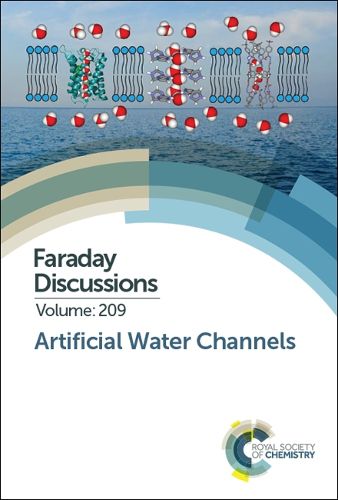Readings Newsletter
Become a Readings Member to make your shopping experience even easier.
Sign in or sign up for free!
You’re not far away from qualifying for FREE standard shipping within Australia
You’ve qualified for FREE standard shipping within Australia
The cart is loading…






This volume will focus on the chemistry, physics and material sciences contributions toward the rapidly evolving field of artificial water channels.
The development of synthetic biomimetic artificial water-channels and pores is key for a better understanding of the natural function of protein channels. It is hoped to offer new strategies to generate highly selective, advanced materials for water purification systems.
While synthetic chemists have produced sophisticated architectures able to confine water clusters, most water channel based work is being conducted with natural protein channels as selectivity components, embedded in the diverse arrays of bio-assisted artificial systems. Experimental results have demonstrated that natural biomolecules can be used as bio-assisted building blocks for the construction of highly selective water transport through artificial channels. Moving to simpler water-channel systems offers a chance to better understand mechanistic and structural behaviours and to uncover novel interactive water channels that might parallel those in biomolecular systems.
In this volume the topics covered include:
Structure and function of natural proteins for water transport Biomimetic water channels The modelling and enhancement of water hydrodynamics Applications to water transport systems
$9.00 standard shipping within Australia
FREE standard shipping within Australia for orders over $100.00
Express & International shipping calculated at checkout
This volume will focus on the chemistry, physics and material sciences contributions toward the rapidly evolving field of artificial water channels.
The development of synthetic biomimetic artificial water-channels and pores is key for a better understanding of the natural function of protein channels. It is hoped to offer new strategies to generate highly selective, advanced materials for water purification systems.
While synthetic chemists have produced sophisticated architectures able to confine water clusters, most water channel based work is being conducted with natural protein channels as selectivity components, embedded in the diverse arrays of bio-assisted artificial systems. Experimental results have demonstrated that natural biomolecules can be used as bio-assisted building blocks for the construction of highly selective water transport through artificial channels. Moving to simpler water-channel systems offers a chance to better understand mechanistic and structural behaviours and to uncover novel interactive water channels that might parallel those in biomolecular systems.
In this volume the topics covered include:
Structure and function of natural proteins for water transport Biomimetic water channels The modelling and enhancement of water hydrodynamics Applications to water transport systems